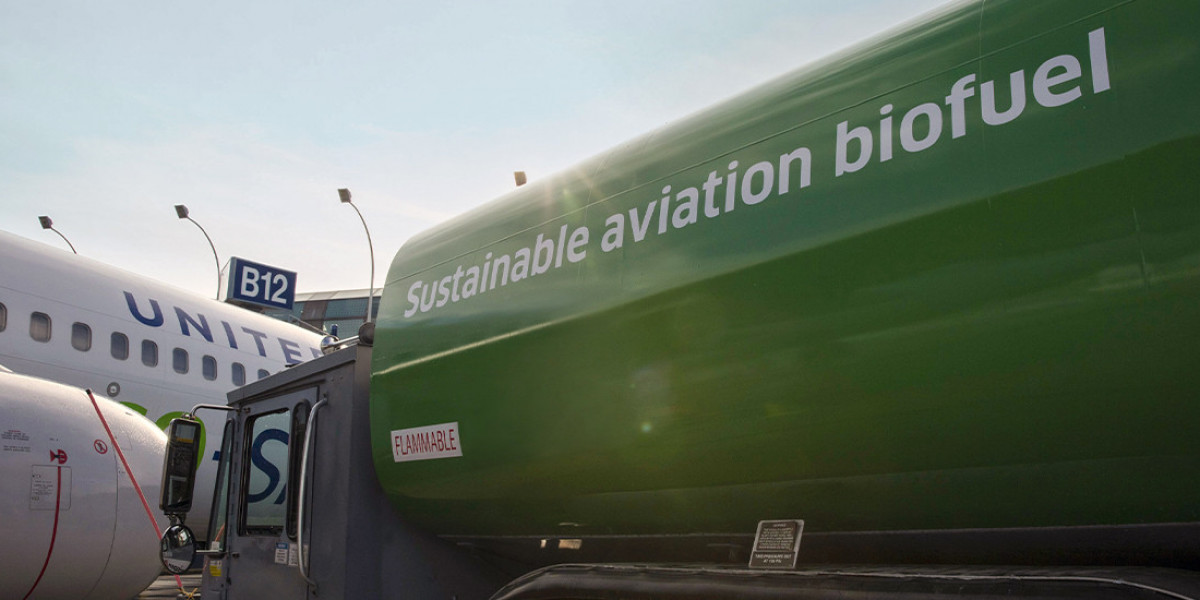Revolutionizing the Skies: The Soaring Potential of Sustainable Aviation Fuel Market
Introduction
The aviation industry has long been a symbol of human progress, connecting the world and facilitating global trade and travel. However, the environmental impact of conventional aviation fuels has become an increasingly urgent concern as the world grapples with the challenges of climate change. In response, the aviation sector is turning to sustainable aviation fuel (SAF) as a key solution to reduce its carbon footprint. SAF holds the promise of revolutionizing the industry by offering a more environmentally friendly alternative to traditional jet fuels. This article delves into the burgeoning sustainable aviation fuel market, exploring its benefits, challenges, and potential to transform the skies.
The Need for Sustainable Aviation Fuel
Aviation is a significant contributor to greenhouse gas emissions, with commercial aviation alone accounting for around 2-3% of global CO2 emissions. As climate concerns escalate, there's mounting pressure on the industry to adopt sustainable practices. This is where SAF comes into play. SAF, often derived from feedstocks like waste oils, agricultural residues, and algae, offers a cleaner alternative to conventional jet fuel. It has the potential to reduce emissions significantly by enabling airlines to operate flights with lower net carbon outputs.
Advantages of Sustainable Aviation Fuel
1. Reduced Carbon Emissions: SAF has the potential to reduce CO2 emissions by up to 80% compared to conventional jet fuel. This substantial reduction makes it a crucial component in achieving the aviation industry's emission reduction targets.
2. Compatibility with Existing Infrastructure: One of the key advantages of SAF is its compatibility with existing aircraft and infrastructure. It can be used in existing engines without any modifications, making it a feasible transition option for airlines.
3. Diversification of Feedstocks: SAF can be produced from a variety of feedstocks, including waste materials, agricultural residues, and even carbon dioxide captured from the atmosphere. This diversity mitigates concerns over resource scarcity and promotes sustainable land and resource management practices.
4. Potential for Technological Innovation: Investment in SAF research and production can drive technological advancements in sustainable fuel production, with benefits potentially extending beyond aviation to other sectors, such as ground transportation and industry.
Challenges and Roadblocks
While the potential benefits of SAF are evident, the road to widespread adoption is not without challenges:
1. Cost and Scale: Currently, SAF production is more expensive than conventional jet fuel due to limited production scale and economies of scale. Widespread adoption will require significant investment in production facilities and technologies to bring costs down.
2. Supply Chain and Infrastructure: Developing a robust supply chain for sustainable feedstocks and fuel distribution infrastructure is essential. This involves cooperation among various stakeholders, including feedstock suppliers, refineries, and airlines.
3. Policy and Incentives: Governments and international organizations play a vital role in promoting SAF adoption through supportive policies, incentives, and regulations that level the playing field between conventional and sustainable fuels.
4. Public Awareness: Educating the public about the benefits of SAF and fostering a willingness to support cleaner aviation practices is crucial. Consumer demand can influence airlines' decisions to invest in SAF.
The Path Forward
The sustainable aviation fuel market size is gaining momentum, driven by a growing consensus that the aviation industry must take action to mitigate its environmental impact. To realize the full potential of SAF, collaboration across governments, airlines, fuel producers, and researchers is paramount. Investment in research and development, policy support, and infrastructure development will be critical in driving down costs and increasing production capacity.
As technology advances and economies of scale are achieved, the price of SAF is expected to become more competitive with traditional jet fuels. This will encourage more airlines to adopt SAF, contributing to a substantial reduction in aviation emissions and fostering a greener future for the industry.
Conclusion
The aviation industry's journey towards sustainability is reaching new heights with the emergence of sustainable aviation fuel. While challenges remain, the promise of reducing carbon emissions, compatibility with existing infrastructure, and the potential for innovation make SAF a key player in shaping the future of aviation. As the sustainable aviation fuel market continues to expand, the skies may become a clearer and more eco-friendly pathway to global connectivity and progress.
Related Reports:








